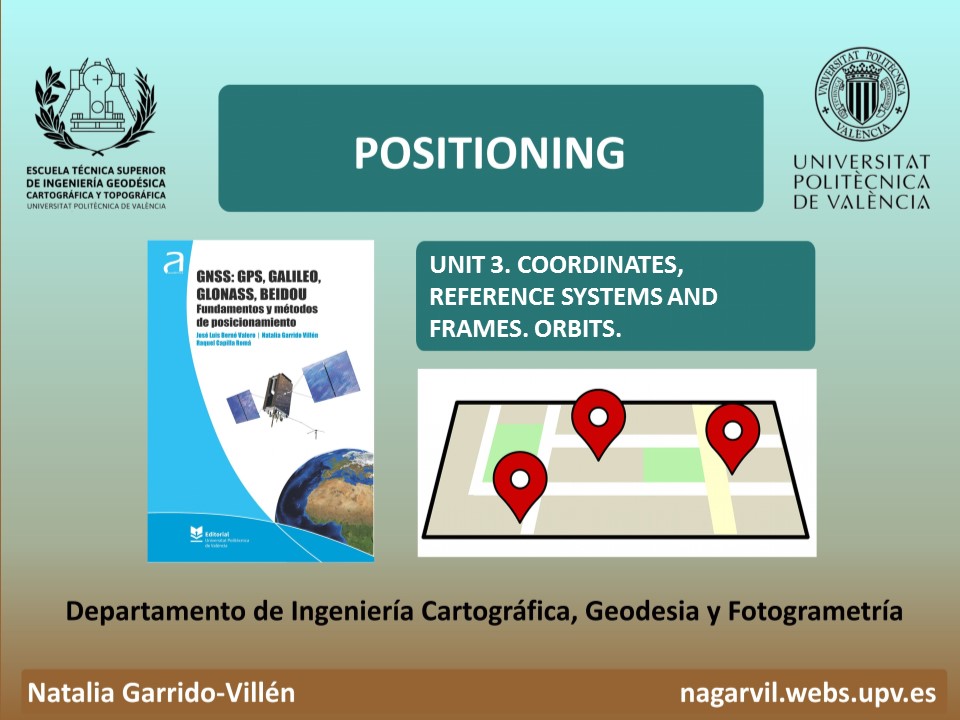GNSS reference systems
In this presentation about GNSS reference systems, next topics are developed: GNSS coordinates (Reference System, Reference Frame, Coordinate System, GNSS Coordinate System) and Orbits (Ephemeris and Calculation of satellite coordinates).
Reference systems and frames
A reference system is a conceptual definition of theories, hypotheses and constants that allow the three coordinates to be placed in space so that position and movement of the points can be determined.
It needs an origin, axis directions, scale, algorithms for its spatial and temporal transformations and constants used in the definitions and corrections. Of course, an ellipsoid is associated.
The official reference system is Spain is ETRS89. A reference frame is the physical materialization of a reference system. Reference system is rather invariable and inaccessible and reference frame is accessible and perfectible [Altamimi et al. 2002].
The general purpose of a TRF (Terrestrial reference system is to define coordinate systems in which points of the Earth are only slowly changing and to describe the motion of any object of the Earth’s environment (such as an artificial satellite).

Orbits
To find the satellite position every satellite sends the almanac of every other satellite but it sends only its own ephemeris.
The Almanac are the keplerian parameters of theoretical orbit and location.
Ephemeris are the parameters to calculate instant coordinates. There are two types of ephemeris, broadcast ephemeris and precise ephemeris.
The Keplerian orbit is a theoretical orbit, but orbiting satellites don’t strictly follow a Keplerian orbit.
Satellites are disrupted by disturbing forces mainly caused by:
–The Earth’s gravitational field.
–Effects of the Moon and the Sun..
–Other atmospheric effects.
- Affect the movement of satellites around the Earth.
- They result in the acceleration of the satellite.


